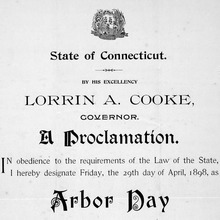“French Elzevir or French Oldstyle was
derived from types popularized in France in the eighteenth to early
nineteenth centuries [Beaudoire,
1909], and again became popular in the late nineteenth and
early twentieth centuries, with several variations identified only
by a supplemental number. […] The have been made by a number of
[American] foundries […] French Oldstyle faces were
the inspiration for MacFarland
and De
Vinne.” [McGrew]
The earliest of these American revivals may be Central’s
all-caps French Old Style and French Old Style
No. 2 which had a lowercase and more sizes. [1892
specimen] BB&S shows an all-caps French Old
Style and a related Elzevir with lowercase and
italics. [1893
specimen] By 1906 ATF had revised it as Lining French
Oldstyle No. 552. More…
“French Elzevir or French Oldstyle was derived from types popularized in France in the eighteenth to early nineteenth centuries [Beaudoire, 1909], and again became popular in the late nineteenth and early twentieth centuries, with several variations identified only by a supplemental number. […] The have been made by a number of [American] foundries […] French Oldstyle faces were the inspiration for MacFarland and De Vinne.” [McGrew]
The earliest of these American revivals may be Central’s all-caps French Old Style and French Old Style No. 2 which had a lowercase and more sizes. [1892 specimen] BB&S shows an all-caps French Old Style and a related Elzevir with lowercase and italics. [1893 specimen] By 1906 ATF had revised it as Lining French Oldstyle No. 552. Monotype’s version was No. 71. MS&J’s was French Elzevir.
According to Loy, Gustav F. Schroeder cut the lowercase of French Old Style for Central Type Foundry, and that he later cut an 18-point size of a French Old Style No. 2 for Pacific States Type Foundry. [MacMillan]













